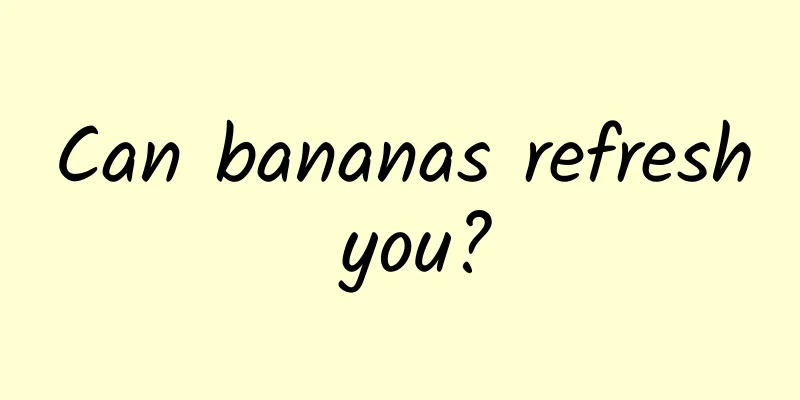Why does a pregnant woman have thick white tongue coating? What are the classifications of tongue coating?

|
Traditional Chinese medicine believes that the tongue coating is a layer of moss-like substance spread on the surface of the tongue. It is formed by the stomach qi fumigating the grain qi and food turbidity in the stomach and condensing on the surface of the tongue. Observation of it can reflect the physiological functions and pathological changes of the human body. It is one of the unique diagnostic methods of traditional Chinese medicine. So what types of tongue coating are there? Classification of tongue coating color The changes in tongue coating color mainly include white coating, yellow coating, and gray-black coating. In daily life, these three types of coating colors can appear alone or together. Various changes in coating color also reflect the severity of the disease development from the side, and should be comprehensively analyzed based on the individual's specific situation. White moss White tongue coating is the most common tongue coating color. Other tongue coating colors can be transformed from white tongue coating. White fur is the natural color of the tongue coating. A thin, white and moist tongue coating is the tongue coating of a normal person. It can also be caused by the early stage of external symptoms, or a mild internal disease where the pathogenic factors have not yet penetrated deeply, or yang deficiency and internal cold. Yellow Moss Yellow tongue coating refers to the yellow color of the tongue coating, which can be divided into light yellow, dark yellow and burnt yellow depending on the degree of yellowness. It is generally manifested as heat syndrome and internal symptoms. The yellower the tongue coating is, the more severe the heat evil is. A light yellow tongue indicates mild heat, a dark yellow tongue indicates severe heat, and a burnt yellow tongue indicates extreme heat. The location of the evil heat can also be explained according to the location of the yellow tongue coating: yellow tongue tip coating indicates heat in the upper part of the body; yellow tongue middle coating mostly indicates heat in the stomach and intestines; yellow tongue root coating indicates heat in the lower part of the body. Gray black moss Light black moss is called gray moss, and black moss is darker than gray moss. The only difference between gray moss and black moss is the depth of color, so it is also often called gray-black moss. Gray-black tongue coating can be seen in fever diseases as well as in cold-dampness diseases, but regardless of whether it is hot or cold, it indicates a more serious condition, and the darker the black, the more serious the condition. What causes thick tongue coating? The thickness of the tongue coating mainly reflects the strength of the evil and the righteousness and the depth of the evil qi. The tongue coating is thin, white and evenly distributed, or slightly thicker in the middle, with moderate dryness and wetness. This is a normal tongue coating, indicating that the stomach has vital energy. If the patient is still sick, it means that the condition is relatively mild and the stomach qi has not been damaged. Thick tongue coating is caused by the stagnation of stomach qi, dampness, phlegm, and food turbidity on the tongue surface. It means that the disease is inside and the condition is serious. Common tongue coating analysis Thick white tongue coating Thick white tongue coating refers to a white coating that is so thick that you cannot even see the color of the tongue underneath. Thick white tongue coating is a sign of excessive evil qi. If the tongue coating of an external infection changes from thin white to thick white, and from loose to tightly attached to the tongue and cannot be scraped off, it means that the wind-cold evil is heavier and has a tendency to turn into heat and enter the body. This kind of tongue coating appears in cases of internal injuries and miscellaneous diseases, which also indicates that evil spirits such as cold, dampness, phlegm and food are prevalent within the body. If the tongue color is normal or redder, it means that the vital energy has not yet been exhausted and can fight against the pathogens. If the tongue is pale with thick white coating, it indicates that the vital energy is weak and the evil spirits are prevalent, which is a sign that the evil spirits have triumphed over the vital energy. Thick yellow tongue coating The tongue coating is yellow and dry, thick and accumulated all over the tongue, with coarse and loose grains, looking like sand and gravel, and feeling rough when touched. This type of tongue coating indicates excessive internal heat, which damages body fluids. Because the excessive heat evil fumigates the tongue, the tongue coating is yellow; because the heat evil damages the body fluid, the tongue coating is dry and not moist, and may even be rough and cracked like sand and stone. If the tongue coating is yellow and dry with cracks in the middle, it is mostly due to heat accumulation and fluid deficiency, and is often accompanied by symptoms such as constipation, distension and pain in the navel and abdomen, and other visceral fullness. Greasy white tongue coating The tongue coating is white, with fine and dense particles, sticking to the surface of the tongue and not easily falling off by scraping. Traditional Chinese medicine believes that "dampness is sticky", so a sticky, turbid tongue coating indicates that there is stagnant dampness in the body. Evil dampness can be caused by external factors or internal dampness. Dampness is a Yin evil that can easily obstruct the Qi and damage the Yang Qi. Therefore, the Yang Qi is restrained and cannot expand, which hinders the spleen and stomach's function of transporting water and dampness. Therefore, symptoms such as pale tongue coating and white greasy tongue coating can be seen. Yellow and greasy tongue coating The tongue coating is yellow and sticky, with particles that are tightly adhered to the tongue and cannot be easily scraped off. Traditional Chinese medicine believes that yellow tongue coating indicates heat, while greasy tongue coating indicates dampness, phlegm, and food stagnation. Therefore, yellow and greasy tongue coating indicates symptoms such as dampness and heat, phlegm and heat, and food stagnation turning into heat. Such as deep yellow. If the degree of stickiness is severe, it means that heat is more serious than dampness, and the phlegm and saliva are also severe; if the color is light yellow and the degree of stickiness is lighter, it means that dampness is more serious than heat, and the phlegm and saliva are also lighter. |
<<: What are the side effects of yam? Things to note when eating yam
>>: Judging spleen and stomach health from tongue coating! Did you know?
Recommend
Can exercise effectively treat myocardial ischemia?
People with myocardial ischemia are actually not ...
How to remove blood clots in the uterus
The female uterus is one of the most important re...
The efficacy and function of Shashi Deer Antler Grass
Deer antler grass is also known as thousand-year-...
What medicine should I take for gastric prolapse?
Gastroptosis, also known as gastroptosis, is a re...
What ointment to use for blistering eczema
Nowadays, more and more people are suffering from...
Why does my heart beat very fast when I sleep at night?
Sleeping at night is the time for the human brain...
Survival time of hepatic encephalopathy
The survival time of hepatic encephalopathy can b...
Salty pancake recipe
The characteristic of salty pancakes is that they...
What are the dangers of amnesia?
Is amnesia really that dangerous? I believe every...
What is the use of sandblasting for teeth cleaning?
The main function of teeth cleaning sandblasting ...
What are the dangers and symptoms of pelvic effusion?
Pelvic effusion is pelvic accumulation of water, ...
Which Chinese medicine soaked in rice wine is better for kidney nourishment?
Nourishing the kidneys and strengthening yang is ...
So painful! This disease afflicts nearly half of the middle-aged and elderly people
"Crack", "Ouch! It hurts so much!&...
Angongwan is suitable for people
Angong Pills are a relatively well-known Chinese ...
How old is it normal for a girl to have discharge?
It is normal for girls to have some vaginal disch...









